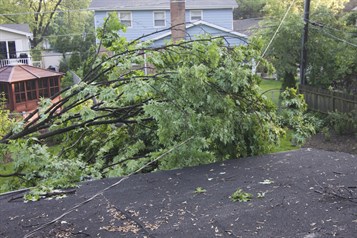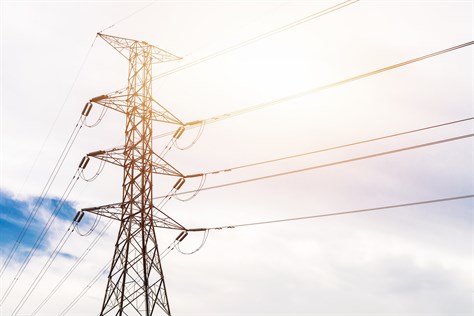High-speed winds during a thunderstorm may cause trees around an electric grid to crash into the distribution system feeders causing an outage in that area. Currently, most utility companies diminish such accidents by scheduling regular tree-trimming operations. This effort is costly and is based on a rotational approach to different service areas, which may take months and sometimes years before all trees are trimmed.
 Texas A&M University researchers have developed an intelligent model that can predict a potential vulnerability to utility assets and present a map of where and when a possible outage may occur. The predictive feature allows the trees in the most critical areas with the highest risk to be trimmed first.
Texas A&M University researchers have developed an intelligent model that can predict a potential vulnerability to utility assets and present a map of where and when a possible outage may occur. The predictive feature allows the trees in the most critical areas with the highest risk to be trimmed first.
Dr. Mladen Kezunovic, Regents Professor and holder of the Eugene E. Webb professorship in the Department of Electrical and Computer Engineering, along with graduate students Tatjana Dokic and Po-Chen Chen, have developed the framework for a model that can predict weather hazards, vulnerability of electric grids and the economic impact of the potential damage.
By analyzing the impact of a potential vulnerability and weather impacts on power system outages, the researchers can predict where and when outages can occur. Predicting an optimal tree trimming schedule that would minimize the risk of vegetation-related outages is only one of the applications.
“The utility grids and related assets are mostly located outdoors and are exposed to all kinds of weather hazards. Dealing with aging infrastructure assets adds another layer of complexity that utility companies face,” said Kezunovic. “Any kind of environmental data that has some relevance to the power system can be fed into this prediction framework.”
Data such as a utility company’s operational records, weather forecasts, altitude and vegetation around the power systems can be used to customize the applications of the model.
The model is flexible and can process a variety of data despite differing formats and data sources. The researchers say processing such data is a demanding task they have been able to solve. Every source of data and its presentation is different and multifaceted. Based on the goals, they select a large amount of input data from several sources and perform a risk analysis.

Such comprehensive data analytics makes the power system and its operations more reliable.
“The first and foremost goal of utility companies is to assure uninterrupted service,” said Chen. “By improving reliability, we can predict outages. If we can prevent outages with historical and close-to-real-time data, we can save millions of dollars since the outages may be mitigated.”
The researchers describe their methodology for the framework as a three-part process. First, they investigate the probability of a potential hazard, such as severe weather. Next, they assess the vulnerability of the utility assets by taking the weather probability and predicting its impact on the assets. The last and most significant step is evaluating the impact of certain events and the calculation of costs of reliability indices and maintenance, replacement and repair.
The model analyzed historical and close-to-real-time weather data and successfully predicted future vulnerabilities enabling utility companies to have efficient mitigation measures, such as inspection, repair and maintenance processes.
“Overall the risk analysis helps predict the probability of events happening in the near future and then adds the financial impact allowing development of an optimal action plan for the utility operators to execute,” said Chen.
“When outages happen, utility companies lose millions of dollars in just repairs,” said Dokic. “The past has shown how certain outages have cost precious lives too.”
The researchers used CenterPoint Energy’s utility data in their framework and have presented a proof of concept to the company. Their next step is implementation of the model on CenterPoint’s database and environment.
Kezunovic is also director of the Texas A&M Engineering Experiment Station’s Smart Grid Center. The research was supported by CenterPoint Energy, the National Science Foundation (NSF) Center for Ultra-Wide Area Resilient Electric Energy Transmission Networks and in part by NSF Power Systems Engineering Research Center and NSF Smart Grid Big Data Spoke grants. Read more about the research in the IEEE Transactions on Smart Grid journal.